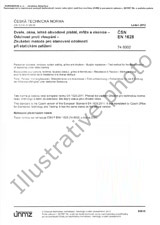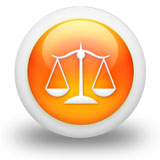We need your consent to use the individual data so that you can see information about your interests, among other things. Click "OK" to give your consent.
ČSN EN 15746-2 (281007)
Railway applications - Track - Road-rail machines and associated equipment - Part 2: General safety requirements
Translate name
STANDARD published on 1.7.2021
The information about the standard:
Designation standards: ČSN EN 15746-2
Classification mark: 281007
Catalog number: 512221
Publication date standards: 1.7.2021
SKU: NS-1028205
The number of pages: 90
Approximate weight : 301 g (0.66 lbs)
Country: Czech technical standard
Category: Technical standards ČSN
The category - similar standards:
Annotation of standard text ČSN EN 15746-2 (281007):
This document specifies the significant hazards, hazardous situations and events, common to self-propelled road-rail machines - henceforward referred to as machines - and associated equipment, arising due to the adaptation for their use on railway networks and urban rail networks. These machines are intended for construction, maintenance and inspection of the railway infrastructure, shunting and emergency rescue vehicles, when they are used as intended and under conditions of misuse which are reasonably foreseeable by the manufacturer; see Clause 4.
This document deals with the common hazards during assembly and installation, commissioning, travelling on and off track, use including setting, programming, and process changeover, operation, cleaning, fault finding, maintenance and de-commissioning of the machines.
NOTE - Specific measures for exceptional circumstances are not dealt with in this document. They can be subject to negotiation between manufacturer and the machine operator.
The common hazards dealt with include the general hazards presented by the machines, also the hazards presented by the following specific machine functions:
- a) excavation;
- b) ballast tamping, ballast cleaning, ballast regulating, ballast consolidating;
- c) track construction, renewal, maintenance and repair;
- d) lifting;
- e) overhead contact line system renewal / maintenance;
- f) maintenance of the components of the infrastructure;
- g) inspection and measurement of the components of the infrastructure;
- h) working in tunnels;
- i) shunting;
- j) vegetation control;
- k) emergency rescue and recovery;
- during commissioning, use, maintenance and servicing.
For a road-rail machine it is assumed that an EU road permissible host vehicle will offer an accepted safety level for its designed basic functions before conversion. Unless explicitly stated otherwise in a particular clause this specific aspect is not dealt with in this document.
This document does not deal with:
- 1) requirements with regard to the quality of work and the performance of the machine;
- 2) machines that utilize the contact line system for traction purposes;
- 3) specific requirements established by a railway Infrastructure Manager or Urban Rail Manager;
- 4) negotiations between the manufacturer and the machine operator for additional or alternative requirements;
- 5) requirements for use and travel of the machine on public highway;
- 6) hazards due to air pressure caused by the passing of high-speed trains at more than 190 km/h;
- 7) requirements which could be necessary in case of use in extreme conditions, such as extreme ambient temperatures (tropical or polar); see 5.30;
- 8) highly corrosive or contaminating environment, e.g. due to the presence of chemicals;
- 9) potentially explosive atmospheres.
Other special machines used on railway tracks are dealt with in other European Standards, see Annex E
Preview of the standard ČSN EN 15746-2 (281007)
We recommend:
Updating of laws
Do you want to be sure about the validity of used regulations?
We offer you a solution so that you could use valid and updated legislative regulations.
Would you like to get more information? Look at this page.




 Cookies
Cookies
